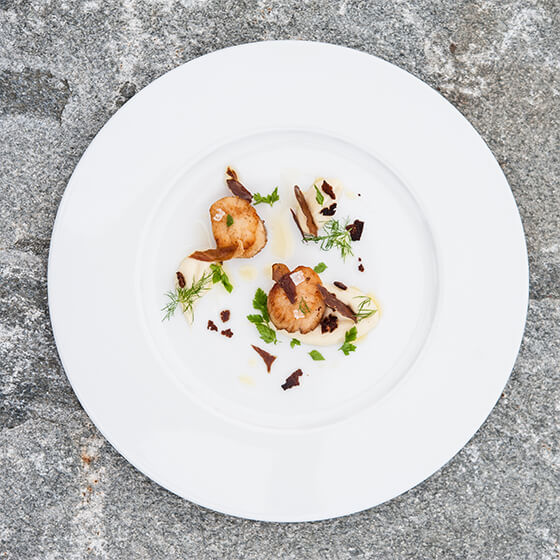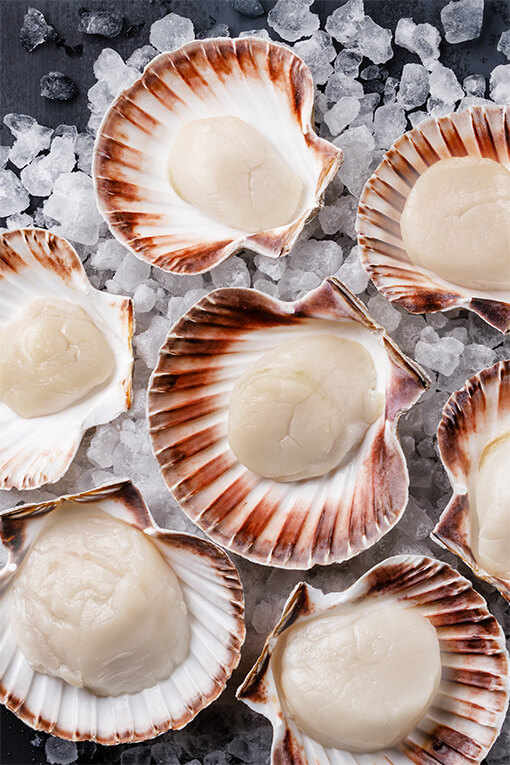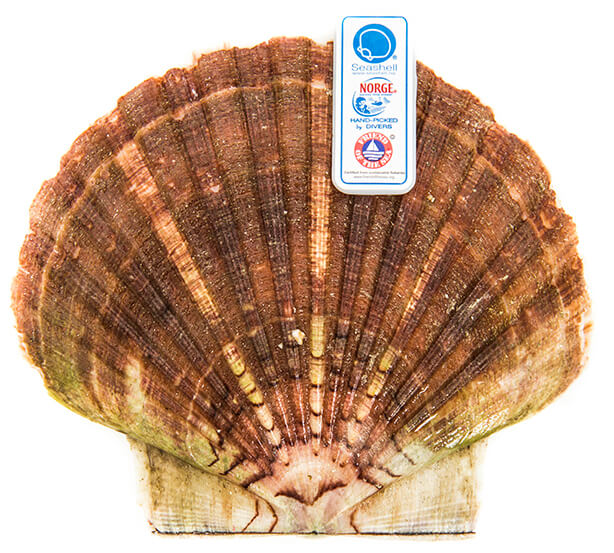Physical
Characteristics
A great scallop can live for over 20 years. It can also grow to a height of around 18cm while weighing about 600 grams. Generally speaking, the size of the scallop meat ranges from about 6 to 9cm.
The scallop doesn't actually have a brain. It runs on a decentralized nervous system, which scientists refer to as "ganglia". It also doesn't change its sex like other mollusks, rather it often has female and male organs simultaneously.
It has a meaty muscle underneath its rigid shell. This muscle is the meat we consume, and it is nothing short of delicious when seasoned and lightly fried for crispness.

Fascinating
Fact
When thinking of scallops, the first thing many think of is pairing them with generous helpings of garlic, butter, and white wine as part of a delicious meal. Others imagine the famous Botticelli painting featuring Venus standing on a giant scallop shell or even remember the logo of their local gas station.
However, it is unlikely that you will immediately think of a self-fertilizing hermaphrodite that can reproduce all by itself. That being said, that is one of the more fascinating facts about this unique sea creature.
That is not all; unlike the likes of oysters and clams, scallops have figured out ways to move across the seabed. It can't quite be described as swimming, more jutting, as they rarely move more than five or six paces at a time. However, it is a fascinating process to view as the scallop opens and shuts its shell, releasing and taking in water to gain momentum.
Although they are probably not going to win any races, it is a useful way to avoid predators who recognize the value of what is inside that shell.
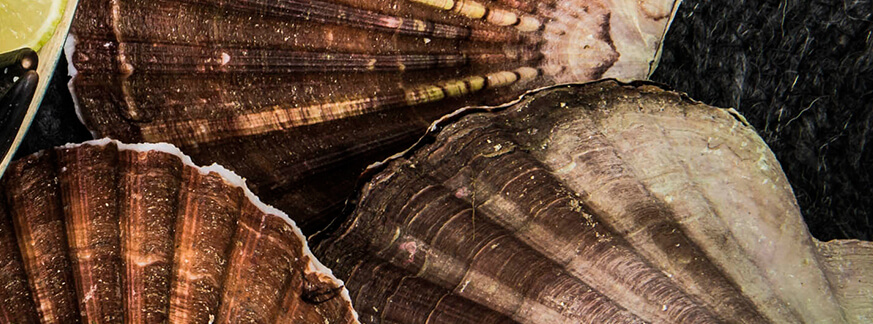
Natural
Habitat
If you are on the outlook for these guys, you will most likely find them in the seabed, in areas with a strong current. Scallops require a high level of salinity, so they thrive in the regions that can supply this.
In Norway, Scallops are harvested from the outer Oslo fjord, all the way to Nordland. In Norwegian waters, they are most typically found at depths ranging from five to 30 meters. There is literally no damage done to the environment or products during the harvesting process. Divers simply harvest scallops of a certain size by hand in the often unforgiving Norwegian waters.
This is one of the least invasive ways of harvesting seafood.
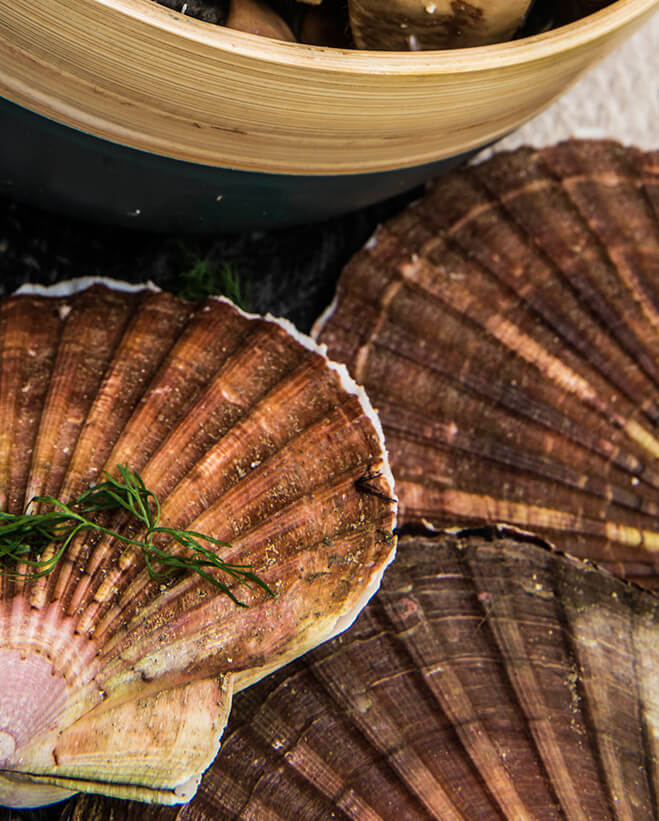
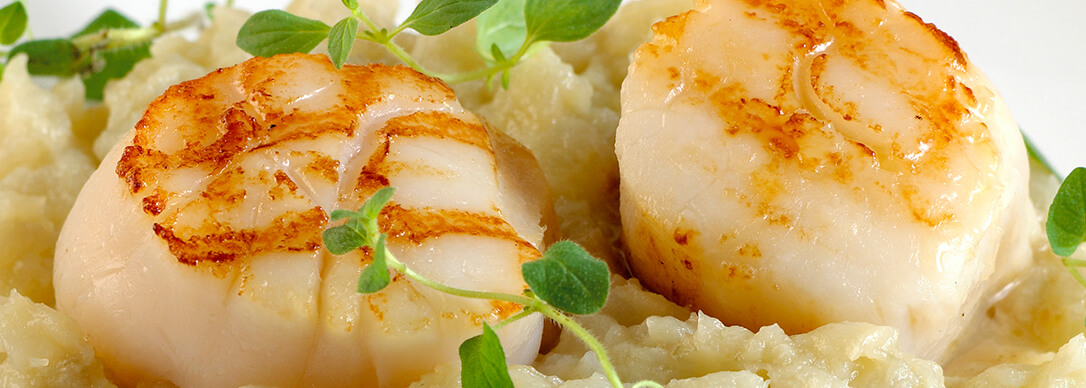
Diet
A scallop will feed on all sorts of microorganisms, bacteria, and algae found on the seabed.
Currents from the ocean also supply it with particles, which differ depending on factors, ranging from depth to topography to the season. Unlike mussels and oysters, scallops can't close their shell, and with an intolerance to freshwater, they can only survive in deep full salinity seawater.
Nutrition
It is also an incredibly versatile and scrumptious option if you're looking for healthy Omega-3 fat, vitamin B12, and zinc to support brain function.
They have been a popular delicacy for as long as records have been kept, with the likes of Marco Polo recording their sale at a market in 1280.
It has a typical shelf life of about seven days.
Don't be fooled by their meat's firm texture, as when it is prepared and cooked correctly, scallops are mouth-wateringly tasty. Steaming and frying are the most common methods associated with cooking this dish, with general helpings of seasoning an absolute must.
It doesn't take a genius to recognize the value of this brainless seafood on a menu. Not only is it healthy, but it's also nutritious.
